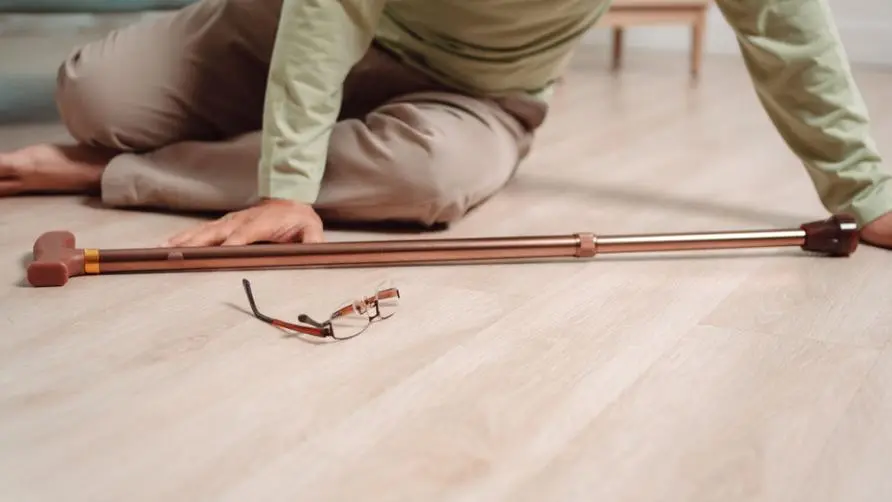Sitting for 6 hours is the worst thing for your heart? The European Society of Cardiology says: Even sleeping on your back is healthier than sitting up

Is “sitting for long periods of time” actually the most harmful behavior to heart health? According to the Taiwan Health Promotion Administration, an individual meets the definition of sedentary if he or she is sitting or lying down for more than 6 consecutive hours. A recent article in the European Heart Journal (EHJ), a publication of the European Society of Cardiology (ESC), stated that “moderate-intensity exercise” has the most significant improvement in heart health; however, even if you replace long periods of sitting with low-intensity exercise, you can also gain benefits. There are certain benefits; even “lying down to sleep” is healthier than sitting for a long time.
Is sitting for long periods of time the worst thing for your heart? European Society of Cardiology: Exercise helps offset potential risks
The research was initiated by University College London, UK. The research team analyzed data from 6 previous studies, involving a total of 15,246 people from 4 countries (UK, Denmark, Netherlands, Finland). These subjects were asked to wear monitoring devices and roughly classified their behaviors into 5 categories: Sleep , sedentary (sitting or lying except for sleeping), standing, low-intensity exercise (LIPA) and moderate-intensity exercise (MVPA).
In terms of heart health, it is measured through 7 indicators: BMI value, waist circumference value, high-density lipoprotein cholesterol (HDL-C, good cholesterol), HDL-C and total cholesterol ratio, as well as triglycerides and glycated hemoglobin. (HbA1c). In addition, the study also adjusted for variables such as age, gender, alcohol consumption, smoking, medication history or cardiovascular history.
Research on the benefits of replacing sedentary time with “moderate-intensity exercise”: 4 cardiovascular values significantly improved
Preliminary results show that the time and proportion of subjects’ daily behaviors in five categories are as follows:
Sleep: 7.7 hours (31.9%)
Sedentary: 10.4 (43.2%)
Standing: 3.1 (13.0%)
Low-intensity Exercise: 1.5 (6.4%)
Moderate Intensity Exercise: 1.3 (5.5%)
Weight (BMI, waist circumference)
The study found that subjects with a higher proportion of sedentary time had lower participation time in the other four values and were more likely to have a higher BMI. In addition, when other behaviors remain unchanged, if the time of any behavior is reallocated to moderate-intensity exercise, the BMI will decrease the most; even if 7.2 minutes of sedentary behavior is replaced by moderate-intensity exercise, there is a downward trend in BMI. Specifically, replacing 30 minutes of sitting, sleeping, standing, or low-intensity exercise with moderate-intensity exercise will reduce BMI by 0.63, 0.43, 0.40, and 0.15 (kg/m2) respectively.
Reallocating 30 minutes of sitting, sleeping, or standing time to moderate-intensity exercise is associated with lower waist circumference values; they decrease by 2.44, 1.75, and 1.34 (cm) respectively; however, if low-intensity exercise is replaced by moderate-intensity exercise, The association with lower waist circumference was weaker. The minimal change that statistically reduces waist circumference is replacing 5 minutes of low-intensity exercise with moderate-intensity exercise per day, or allocating 1.78 hours of sitting to moderate-intensity exercise, which would result in a 5% reduction in BMI.
Glycated hemoglobin
Replacing standing, sleeping, sedentary, and low-intensity exercise for 30 minutes with moderate-intensity exercise was associated with a decrease in glycated hemoglobin by 1.33, 1.12, 1.04, and 2.00 (mmol/L). Low-intensity exercise was found to be harmful to glycated hemoglobin. Replacing moderate-intensity exercise, standing, sleeping, and sitting for long periods of time with low-intensity exercise was associated with increases in glycated hemoglobin by 2.33, 0.70, 0.63, and 0.42 respectively.
Blood lipids (good cholesterol, good cholesterol/total cholesterol ratio, triglycerides)
For the good cholesterol HDL-C, replacing moderate-intensity exercise with sleep was found to be the most harmful, reducing good cholesterol by 0.10 (mmol/L), increasing the good cholesterol/total cholesterol ratio by 0.17 (mmol/L), and increasing the ratio by 0.13 (mmol/L). /L) Triglycerides. Allocating more than 1 hour of sleep or more than 1.75 hours of sitting to moderate-intensity exercise is best for heart health.
Is sleeping on your back healthier than sitting down? How can office workers exercise within a limited time?
Overall, the findings suggest that just 4-12 minutes a day reallocated to moderate-intensity exercise can produce heart health benefits; conversely, increased sitting time is adversely associated with all cardiovascular outcomes.
Additionally, the association between low-intensity exercise and heart health is generally small or close to zero, while longer periods of standing are positively associated with good cardiovascular outcomes. Adverse associations occurred when sleep replaced any activity (moderate-intensity exercise, low-intensity exercise, standing), while the benefit of sleeping instead of sitting was smaller, but still better overall than sitting alone.
The lead author of the study, Dr. Emmanuel Stamatakis, School of Health Sciences, University of Sydney, Australia, pointed out that for sedentary people or office workers, if you want to prevent the cardiovascular risks caused by sitting for a long time, you can actually try to change several habits, such as getting up and walking for 5 minutes every hour. , walking for 15 minutes during lunch break, taking the stairs instead of taking the elevator, and parking your car or motorcycle farther away from the company are all measures you can try.
“Getting up and walking for 5 minutes every hour is equivalent to 40 minutes of physical activity during an 8-hour working day. Adding 15 minutes of walking during lunch break will give you 1 hour of extra exercise time!” Dr. Stamatakis also emphasized that directly Starting with moderate-intensity exercise, such as jogging, cycling, incline steps, and walking at least 100 steps per minute, will help maximize the benefits of maintaining a healthy heart.
Source:
Further reading:





